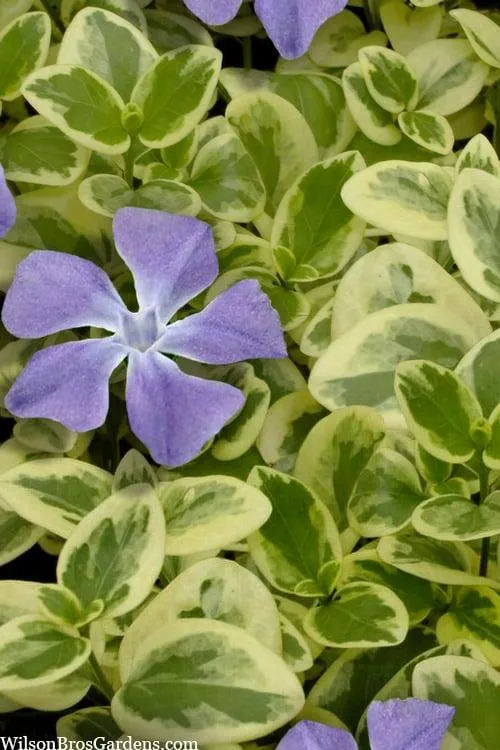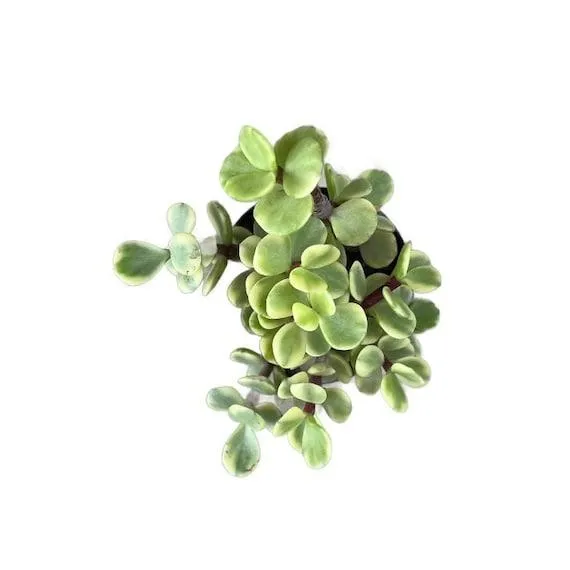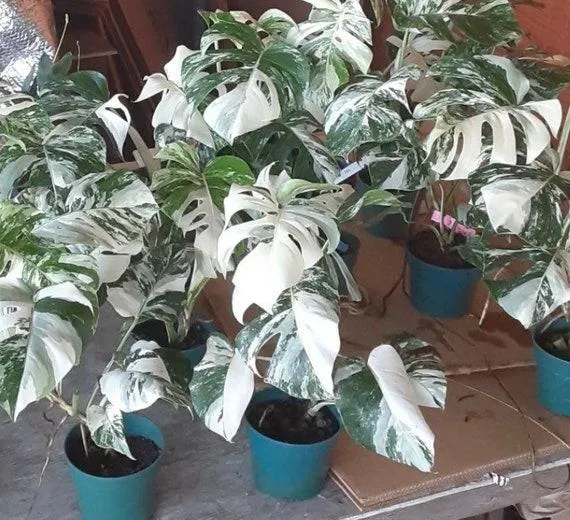Why Are Variegated Plants So Expensive?
If you’ve ever walked down the gardening aisle at your local home improvement store, you’ve likely noticed that variegated plants tend to cost significantly more than their solid green counterparts. As an avid plant collector, I’ve often wondered why variegated plants are priced so high. Through years of experience growing and caring for all types of foliage, I’ve discovered several key factors that help explain their premium price tag.
Variegation Is Difficult to Achieve Naturally
Variegation, which results in leaves marked by splashes or streaks of another color like white or yellow, occurs as a natural genetic mutation in some plant species. However, it’s not an easy mutation for a plant to achieve on its own. Scientists estimate that natural variegation only arises in about 1 in 10,000 plants grown from seed. Because variegation doesn’t come about reliably, nurseries must rely on tissue culture cloning techniques to propagate variegated plants in large quantities. This introduces additional production costs that get passed along to consumers.
Maintaining Variegation Requires Special Care
Once a variegated plant variety is established through cloning, cultivators must take extra precautions to ensure the variegation pattern continues with each new generation. If a variegated plant reverts back to having all green leaves, it loses its ornamental appeal and must be discarded. From my experience growing variegated types, they demand more attentive conditions like brighter light and nutrient-rich soil to avoid reversion. The extra resources needed for raising high-maintenance variegated plants factor into their higher price.
Rarity Drives Up Demand and Cost
Since variegation arises so infrequently in nature, certain variegated cultivars remain quite rare. Scarcity generates hype that stirs consumer interest in unusual and hard-to-find plants. Nurseries know they have a lucrative opportunity on their hands when they discover or develop a new variegated variety. To recoup investment costs and earn a profit, rare variegated plants end up retailing at top dollar.

Aesthetic Appeal Worth Paying For
let’s face it – variegated plants just look cool. The unexpected splash of white or yellow against green adds visual intrigue. For homeowners and designers, variegated foliage provides a stunning design element that stands out in gardens and indoor landscapes. The aesthetic value of variegation influences consumers to part with more cash. As the old saying goes, “you gotta pay to play” if you want that showstopping style in your plant collection. It’s basic supply and demand economics – when demand is high for an aesthetically desirable product, sellers can afford to set a premium price.
Low Survival Rates Uptick Expenses
A sad fact is that many variegated plants have weaker constitutions and don’t always thrive as readily as their solid-colored counterparts. In my past experience starting seedlings, variegated types seemed more prone to dampening off disease and other issues that could claim young plants. Because variegated varieties have lower survival rates, nurseries must start with more seedlings, cuttings or rooted divisions to end up with the same final plant count for sale. The extra initial output directly contributes to higher costs per variegated plant.
What the Consumer is Really Paying For
So in summary, consumers are not just paying a premium for the variegated plant itself. You’re also covering the nursery’s costs associated with specialized tissue culture, closely monitored growing conditions, smaller harvest yields, and intensive labor. When you factor in the rarity, difficult production, and high care requirements, it starts to make sense why variegated beauties commands prices above their solid counterparts. While it may sting the wallet upfront, treating yourself to an unusual variegated plant is an investment in a special decorative plant that will surely liven up your outdoor and indoor spaces for years to come.
Is It Worth the Expense?
That begs the question – is spending more money on a variegated plant actually worth it in the long run? As with any hefty purchase, only you can decide if the cost is justified based on your budget and garden priorities. In my opinion, variegated plants present terrific conversation starters when entertaining guests who admire your foliage collection. And their unique appearance stands out beautifully in windowboxes, mixed planters, or as focal points in larger landscapes. If you can afford the higher price tag and are willing to give the plant ideal care, a variegated specimen will undoubtedly add long-lasting visual interest and value to your plant portfolio. Just go into it realizing you’ll be investing more up front for a plant that requires extra TLC.

Admire Before You Buy
My advice would be to simply admire variegated beauties from a distance at first before committing to a purchase. Check local garden centers and big box stores throughout the growing season, as availability and costs can fluctuate. It’s also worth browsing online plant retailers, as competitive pricing may make premium variegated types more obtainable for your budget. With patience and comparison shopping, you can often find individually potted variegated plants or small rooted cuttings at reasonable discounts. And don’t hesitate to inquire with local greenhouse growers – many are always looking to move less common plants and may offer seasonal promotions. By waiting for the right time or deal, you too can add a coveted showstopper to your collection at an affordable price. Who knows, with care it may even produce offsets you can share or trade with fellow plant dabblers!
Parting Thoughts
In the end, whether the added expense of a variegated plant is worthwhile boils down to individual preferences and financial means. While solid-colored plants offer charm in their own right, variegated varieties inject visual punch that keeps every gardener and plant lover coming back for more. If treating yourself or a plant enthusiast brings you joy, the premium may be one worth paying over the lifetime of a prized variegated specimen. Just go into the purchase fully aware of the potential costs and care involved long-term. With the right conditions and bit of patience, beauties like palm tree Paddle Plants, Whimsical Wandering Jews or unusual Variegated Violet bushes could end up being garden centerpieces for years to root. Now get out there and happy hunting for your dream variegated find!
Why Variegated Plants are Expensive
| Variegation Type | Cause of Cost |
|---|---|
| Variegated leaves | Takes more time, care and nutrients to produce leaves with streaks or markings of different colors |
| Albino variegation | Rare genetic mutation that leaves plant weak and prone to rot, requiring specialized care |
| Tricolor variegation | Even more rare than albino, with three leaf colors that need stringent growing conditions to thrive |
| Reverse variegation | Leaf pattern upside-down, takes experienced hybridizers many trials produce a healthy plant |
| Marbled variegation | Complex veining makes each leaf unique, lengthy propagation process raises costs |
FAQ
-
Why are variegated plants so expensive?
Variegated plants cost more to make compared to regular green plants. Growing colors other than green uses up the plant’s energy. So producers have to select special variegated plant varieties and grow them with extra care under certain conditions. This makes variegated plants harder to develop and therefore more costly.
-
Do variegated plants need more care?
Kinda, but not always basically. Some variegated kinds may be more delicate than regular plants. The non-green parts can’t do photosynthesis like leaves. But many variegated varieties do okay with normal care. It really depends on the individual plant type. Too much sun might burn the white parts for example.

-
Will variegated leaves eventually revert back to green?
Perhaps the variegation may fade over time. See, the green parts can make their own food through photosynthesis while the white parts rely on the plant. Some varieties are more stable than others. The plant’s genes determine how likely it’ll hold onto its variegated pattern. With excellent care, you might be able to keep variegation going for many years.
-
Is variegation a natural occurrence?
Mostly yes, at least originally. Variegation happens by chance in nature due to plant mutations. Sometimes it offers benefits like less leaf area to support, reducing energy use. I guess you could say Mother Nature experiments with variegation on her own. Then plant breeders select for stable variegated traits to bring as cultivars to market.
-
Don’t some plants variegate on their own with age?
You know, it’s possible but not super common. Some folks claim their plants randomly developed variegated leaves out of the blue, like a Kind of surprise. Most experts agree true spontaneous variegation is rare. More likely, variegated reversions or chimeral grafts were present but not noticeable before. The plant’s own genes still dictate its color patterns generally.
-
Is variegated foliage less hardy than green leaves?
It varies depending on the specific plant. Certain variegated kinds face higher stress and may endure less extreme heat, cold, or sun compared to their green counterparts. At the same time, some variegated cultivars show amazing resilience. As with any plant, it takes observing its needs to keep variegated foliage looking its best.

-
Is the added cost of variegation worth it?
For many plant lovers, the beauty of variegated greenery is worth shelling out more cash. But is it fair that collectors drive up prices? Perhaps nurseries charging a premium helps fund research developing sturdier variegated options everyone can enjoy. In the end, variegation adds interest or is a special gift—if the plant’s worth the price to you, then it’s surely worth it!
